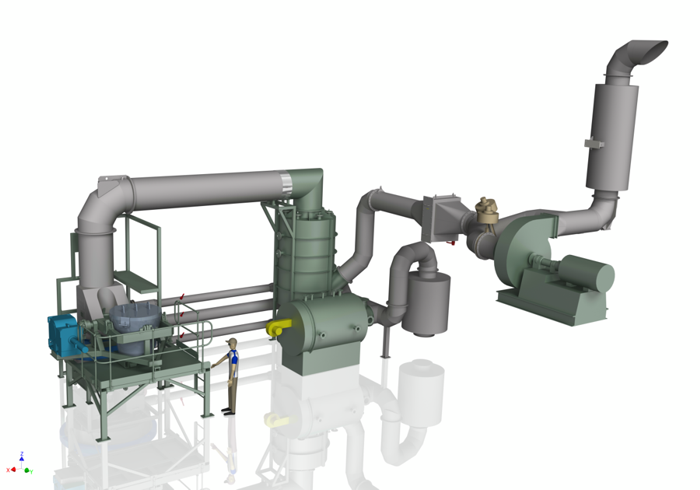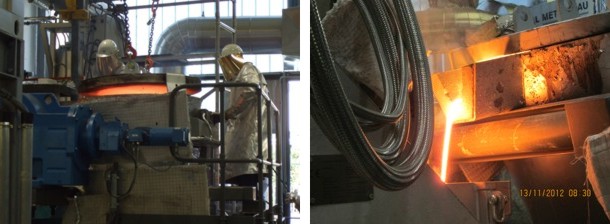Dry Granulation of Blast Furnace Slag for Heat Recovery
Blast furnace slag is known as a by-product from the production of hot metal at integrated steel and iron mills. Approximately 300 kg of this liquid slag with a temperature of about 1500°C is tapped together with each ton hot metal. This results in a worldwide annual production of about 400 million tons of blast furnace slag. Further processed, water granulated blast furnace slag can be produced, if the liquid slag is cooled down rapidly for solidification. State of the art is a closed system which uses lots of water for rapid cooling and solidification to produce a granulated blast furnace slag, which has an amorphous structure. This product normally is dried and grinded for use as a binder in the cement production due to its latent hydraulic properties. The disadvantage of wet systems is on the one hand, the recooling of the circulating water and on the other hand the need for drying of the granulated blast furnace slag, due to the residual moisture up to 20 mass percent. Furthermore, the sensible heat of about 1.5 GJ/t of slag is unused. Using dry slag granulation at integrated steel and iron mills enables the usage of the sensible heat of the blast furnace slag.
Therefore, a new plant has been installed by Siemens VAI in cooperation with Montanuniversitaet Leoben at the Chair of Thermal Processing Technology for research and development. In this project there are the co-partners voestalpine Stahl GmbH, ThyssenKrupp Steel Europe AG and FEhS-Institut für Baustoff-Forschung e.V. This project is funded by the German Federal Ministry of Economics and Technology (BMWi).

Figure1: Isometric drawing of the lab rig
The lab rig is based on the “Rotating Cup” principle. The liquid slag will be atomized by a rotating disk and small particles spread away due to the occurring forces. Further these particles are cooled down with air. The rig at the University of Leoben was designed to find the best operating parameters for producing high quality granulated blast furnace slag and highest possible air outlet temperatures.

Figure2: Handling of the slag pot for granulation
The recovered energy can be used for the production of steam or electricity or for other useful preheating processes. An energy potential for recovering 20 MW thermal energy or alternatively of about 6 MW electric power generation from a slag feed of one ton per minute can be calculated. Without the need of an upstream drying system for the blast furnace slag energy and as a consequence CO2 can be saved. In summary dry granulation of blast furnace slag allows an environmental friendly and sustainable subsequent processing for one of the last big heat recovery potentials at a modern blast furnace.









